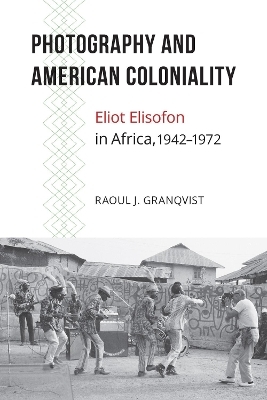
Photography and American Coloniality
Eliot Elisofon in Africa, 1942-1972
Seiten
2017
Michigan State University Press (Verlag)
978-1-61186-236-2 (ISBN)
Michigan State University Press (Verlag)
978-1-61186-236-2 (ISBN)
Questions both why and how the colonialist mythologies represented by the work of photographer Eliot Elisofon persist. It explores Elisofon’s career as war photographer-correspondent and staff photographer for LIFE, filmmaker, author, artist, and collector of “primitive art” and sculpture.
This book is the first to question both why and how the colonialist mythologies represented by the work of photographer Eliot Elisofon persist. It documents and discusses a heterogeneous practice of American coloniality of power as it explores Elisofon’s career as war photographer-correspondent and staff photographer for LIFE, filmmaker, author, artist, and collector of “primitive art” and sculpture.
It focuses on three areas: Elisofon’s narcissism, voyeurism, and sexism; his involvement in the homogenizing of Western social orders and colonial legacies; and his enthused mission of “sending home” a mass of still-life photographs, annexed African artifacts, and assumed vintage knowledge. The book does not challenge his artistic merit or his fascinating personality; what it does question is his production and imagining of “difference”.
As the text travels from World War II to colonialism, postcolonialism, and the Cold War, from Casablanca to Leopoldville (Kinshasa), it proves to be a necessarily strenuous and provocative trip.
This book is the first to question both why and how the colonialist mythologies represented by the work of photographer Eliot Elisofon persist. It documents and discusses a heterogeneous practice of American coloniality of power as it explores Elisofon’s career as war photographer-correspondent and staff photographer for LIFE, filmmaker, author, artist, and collector of “primitive art” and sculpture.
It focuses on three areas: Elisofon’s narcissism, voyeurism, and sexism; his involvement in the homogenizing of Western social orders and colonial legacies; and his enthused mission of “sending home” a mass of still-life photographs, annexed African artifacts, and assumed vintage knowledge. The book does not challenge his artistic merit or his fascinating personality; what it does question is his production and imagining of “difference”.
As the text travels from World War II to colonialism, postcolonialism, and the Cold War, from Casablanca to Leopoldville (Kinshasa), it proves to be a necessarily strenuous and provocative trip.
Raoul J. Granqvist is Professor Emeritus of English at the Department of Language Studies, UmeÅ University.
| Erscheinungsdatum | 21.03.2017 |
|---|---|
| Reihe/Serie | African Humanities and the Arts |
| Verlagsort | East Lansing, MI |
| Sprache | englisch |
| Maße | 152 x 229 mm |
| Gewicht | 590 g |
| Themenwelt | Literatur ► Biografien / Erfahrungsberichte |
| Literatur ► Briefe / Tagebücher | |
| Kunst / Musik / Theater ► Fotokunst | |
| Kunst / Musik / Theater ► Kunstgeschichte / Kunststile | |
| Geisteswissenschaften ► Geschichte ► Regional- / Ländergeschichte | |
| ISBN-10 | 1-61186-236-1 / 1611862361 |
| ISBN-13 | 978-1-61186-236-2 / 9781611862362 |
| Zustand | Neuware |
| Haben Sie eine Frage zum Produkt? |
Mehr entdecken
aus dem Bereich
aus dem Bereich


